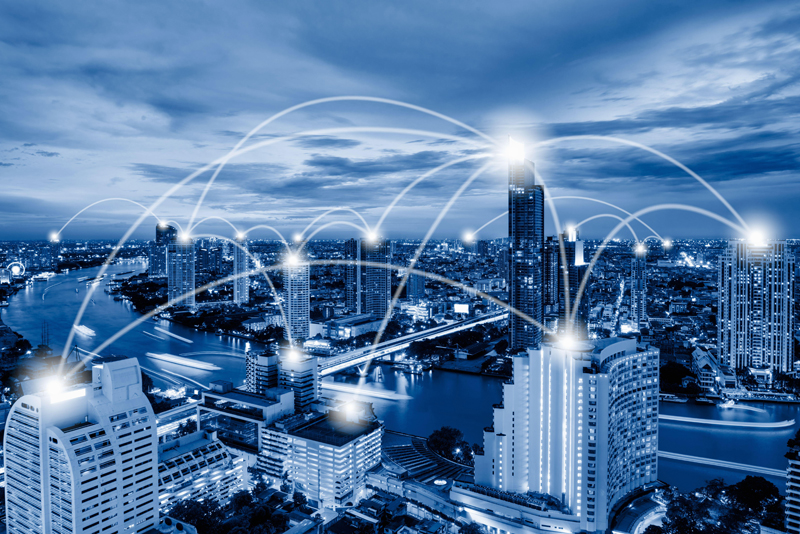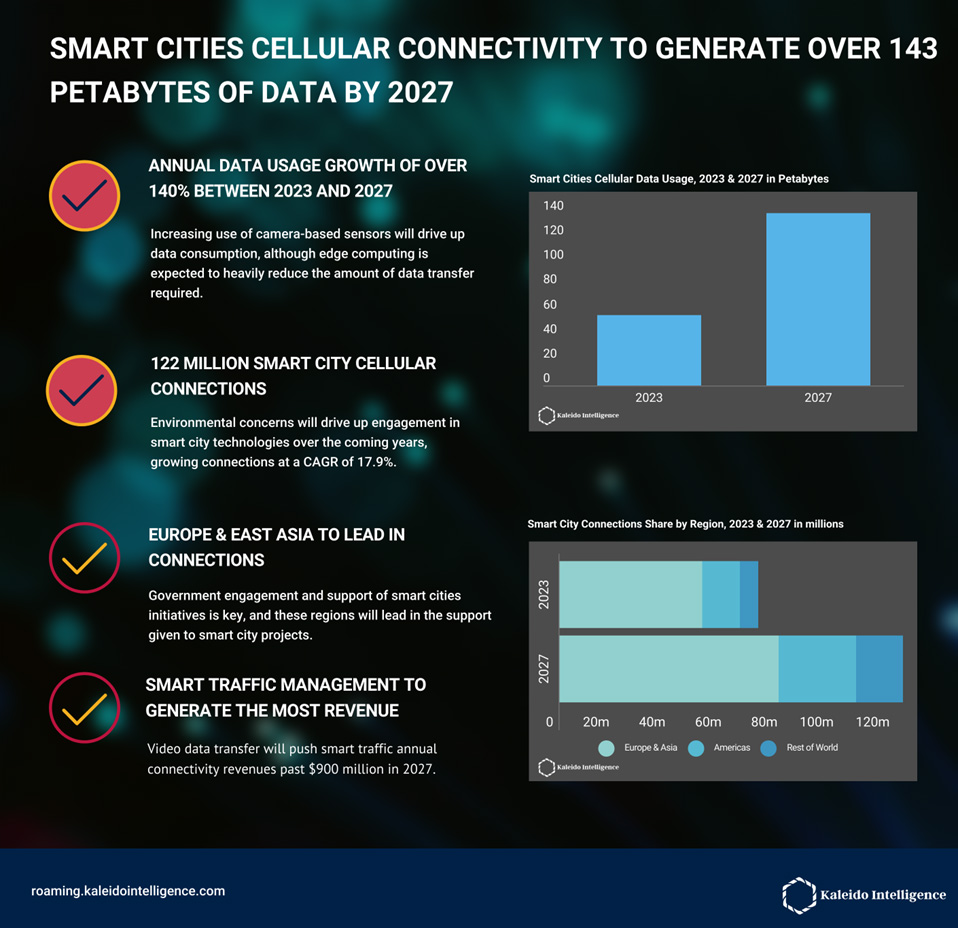Smart city cellular connections will generate over 143 PB of data in 2027


A new report from Kaleido Intelligence, a leading connectivity market intelligence and advisory firm, finds that data usage in smart cities will grow by more than 140% between 2023 and 2027.
The new report, Cellular IoT Connectivity Series: Smart City Opportunities and Forecasts, notes that smart cities have recently returned to the government agenda as urban planning and operations become more sustainable. Especially with local and national governments supporting these initiatives, Europe and East Asia emerged as the largest markets for these technologies.
Kaleido expects smart city initiatives to intensify in the future, with cellular IoT connections growing at a CAGR of 17.9% to more than 122 million between 2022 and 2027, with particularly high growth rates in the next two years.

Cellular networks must be part of a broader solution
The largest number of connections will be in the smart lighting space, with Kaleido expecting more than 161 million lights to be connected to a cellular connection as part of its deployment. However, this and many others will typically be served by a gateway, a single cellular connection relaying data between many lights, which will rely on non-cellular technology at the endpoints. This highlights the need for interoperable data protocols to simplify data transfer across technologies.
Kaleido expects that even where LPWANs are deployed, there will be relatively high data traffic over these connections due to the high number of endpoints relayed through the network. This will require efficient edge computing to limit the flood of data flooding the network; in some cases, we estimate this will reduce data transfers by more than 80%. So the focus needs to be on edge computing and other service-based revenues, not just monetizing connectivity.
Smart Transportation Deployment Leads Revenue Growth
The Kaleido report also found that intelligent traffic management will generate the greatest connectivity revenue, driven primarily by the proliferation of video usage. The firm expects the industry to generate more than $900 million in airtime revenue by 2027, up from $292 million in 2022.
"Intelligent traffic management represents in many ways a nexus of smart city applications," commented study author James Moar.
“Traffic routing decisions can be based on air quality data and the availability of smart parking. However, care must be taken to comply with data privacy legislation and other relevant laws, which will require smart networks to only direct data on a need-to-know basis.”